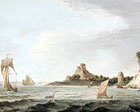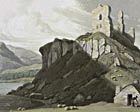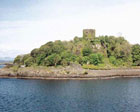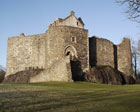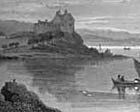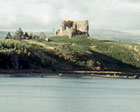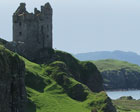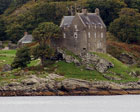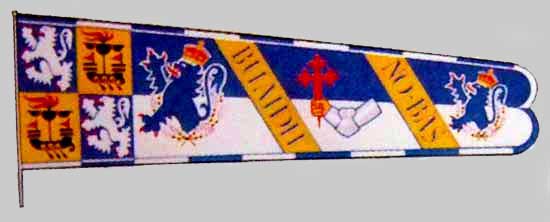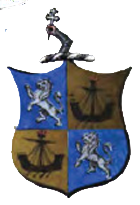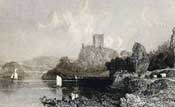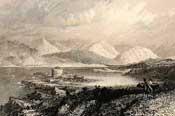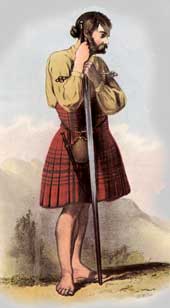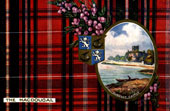 |
||
 |
||
MacDougall ClanBuaidh no bas |
||||||
|
Clan MacDougall information
|
||||||
 |
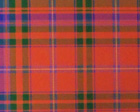 |
 |
||||
|
Clan crest badge |
Dunollie Castle 1789 |
MacDougall tartan |
Clan Location |
|||
|
Aros Castle |
Dunollie Castle now |
Dunstaffnage Castle |
Duntrune Castle |
|||
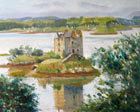 |
||||||
|
Aros Castle now |
Castle Stalker |
Gylen Castle |
Duntrune Castle now |
|||
Clan History The MacDougalls are descendants of Dougall, the eldest son of Sommerled. Ewan MacDougall was King of Lorn and King of the South Isles which was a title bestowed by the King of Norway. Alexander of Argyll, who was the son of Ewan (now called Lord of the Isles), married the sister of John Comyn (the black). When Robert the Bruce murdered his son John (the red) Comyn at Dumfries he set in motion a yearning for revenge that was going to cost someone dearly. The MacDougall's and the Comyn's together with the Lamont's controlled about 15% of Scotland. The Clan's fortunes waxed and waned over the centuries but the period prior to the clash with Bruce was probably their strongest. Then came the call of the Jacobites. In 1715 Dunollie was defended by the Chief's wife while his men were giving battle at Sheriffmuir. This resulted in the estate being forfeited and the Clan Chief being forced into exile, although he was later pardoned in 1727. The clan did not take part in the 1745 and 1746 Jacobite uprisings although some clansmen did fight on the Jacobite side at Culloden.
Dunollie Castle is situated on the northern outskirts of Oban. A small ruin surrounded on three sides by the sea. It is in one of these locations that probably always housed a strong point or lookout tower since man started fearing his fellow man. There is evidence of a fortification there in the sixth century. Parts of the north curtain wall (dating from 1150) and the Keep are mainly all that remain today, apart from the odd outlines bulging in the undergrowth. Latest News After years of dreaming, scheming and planning The Dunollie Project has finally kicked off. They now have their own web-site ( link above ) keeping you abreast of all the happenings and have rolled out their programme for this Homecoming year. Dunstaffnage Castle is located 5 miles to the north of Oban. The rough outside walls were part of the MacDougall build in the mid 12th century. The castle was captured by Robert the Bruce when he took his revenge following the battle at the Pass of Brander in 1308. As a Royal Castle, now, it was given into the care of the Campbells. In the 15th century it was enlarged at the orders of King Alexander 2nd. In 1810 it was ruined by a great fire. Duntrune Castle is located on the north shore of Loch Crinan, just to the north of the village of Crinan in Argyll. Originally built by the Clan MacDougall in the 12th century it was taken by the Campbells. The enclosure wall is 6 foot thick and approximately 25 foot high and dates from the 13th Century the tower house dates from the 16th century when under the MacCallum ownership. It was again restored in the late 18th century and modernised in 1954. The Malcolm family moved out to their newly built Poltalloch House in 1853 but returned to Duntrune after 1954 where they still reside today. The castle is not open to the public, the family earns income from holiday lets on the estate Aros Castle on the Sound of Mull is another built in the 12th century and captured for the Crown by Robert the Bruce two hundred years later. After which times it changed hands from MacDonalds to Macleans and eventually to the Campbells who allowed it to fall into ruin in the late 17th century. Cairnburgh Castle is located on the Treshnish Isles northwest of Mull. Not much of it's early history is known but it was noted as held by Ewan MacDougall in 1249. To all accounts this castle was in an unassailable position but the down-side would then be it was hard to replenish. Believed captured by The Bruce and it certainly featured large in the MacLeans history later. Dunchonnel and Coeffin were also both taken by Bruce. Gylen Castle on the island of Kerrera was a new addition being built in 1587 during a good period for the clan. Although this was to be short lived the castle was destroyed by Covenanters during the civil war by General Leslie in 1647. Castle Stalker situated on Loch Laich mid-way between Oban and Glencoe. Was originally built by the clan in 1320. Although it was to pass to the Stewarts along with the title The Lordship of Lorn around 1388. Ardchattan Priory, six miles north of Oban, was founded in 1230 by Duncan MacDougall. It is now a ruin and a site where the MacDougall chiefs were buried up until 1737.
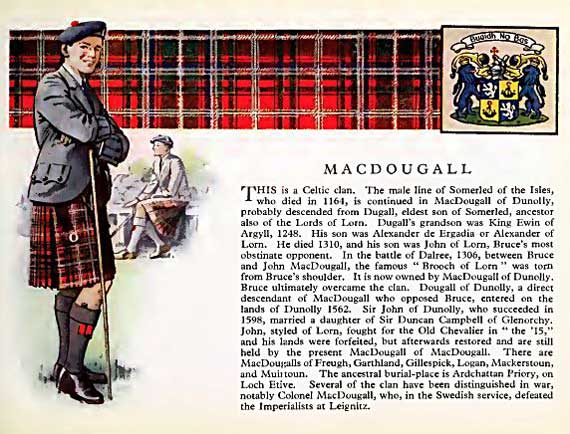 |
||||||
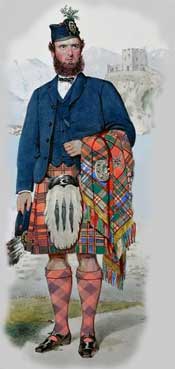
MacDougall clan chief portrayed here in 1868 carries his chief's bonnet and his plaid with a gold border and also the brooch of Lorn. Dunollie Castle is shown in the background.
